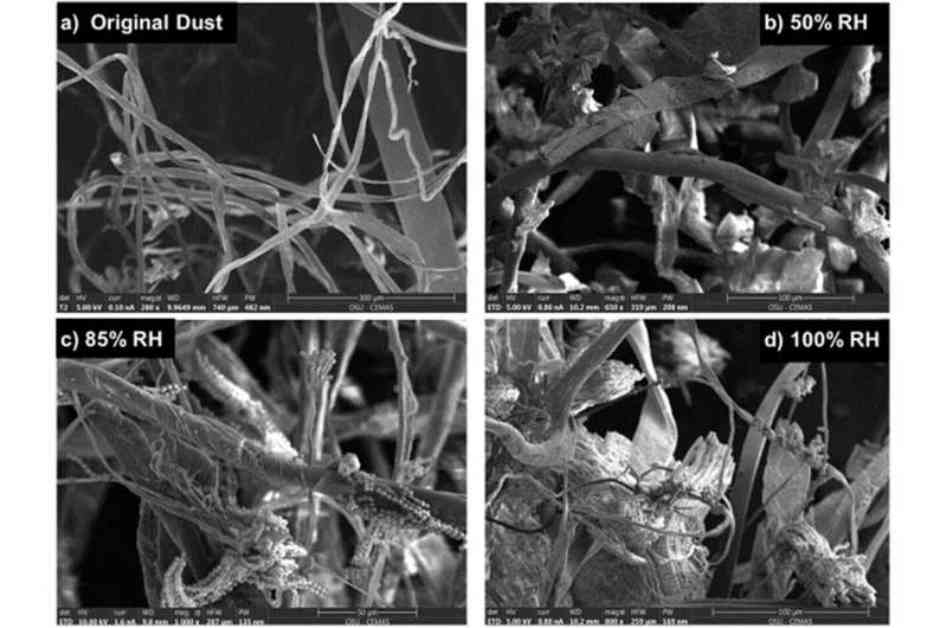Property inspectors often say that where there’s moisture, there’s mold. This is true not only on Earth but also in space stations like the International Space Station (ISS). The interior climate on the ISS is carefully controlled, but if something goes wrong, dangerous mold could start growing quickly. Researchers at The Ohio State University recently published a paper explaining why this happens and suggesting ways to prevent it.
The study found that when dust collects moisture for a short period, the number of microbes in the dust increases significantly, and the dust itself changes to make it easier for the microbes to grow. Since there is plenty of dust on the ISS, astronauts need to be cautious. They already clean the screens covering the air filtration system regularly, and the dust collected from these screens was used in the study. The researchers separated the dust samples, exposed them to different levels of moisture, and observed how the microbes in the dust reacted.
Dust in the ISS is mainly made up of dead human skin and microbes. In closed environments like space stations, a bacterial outbreak could lead to severe reactions, including allergies and asthma. Moreover, the dust and bacteria could even damage the structure of the ISS. To simulate a possible equipment malfunction on the ISS, the researchers exposed the dust samples to higher moisture levels.
To protect astronauts from mold growth, it’s crucial to identify areas where mold could form and maintain a regular cleaning schedule. Mold growth has been a known issue in space exploration, with famous pictures showing mold in space stations. Dr. Dannemiller and her team have developed a model that can predict mold growth in closed environments like the ISS. By analyzing data from the dust samples, they aim to foresee mold growth and allow astronauts to clean affected areas before they become hazardous.
As private spaceflight companies and agencies like NASA work on developing new space habitats, it’s essential to keep these environments free from harmful microbial infestations. Experimenting with mold growth and developing predictive models can help prevent mold issues in future space stations. The goal is to stay ahead of the curve and ensure the safety of astronauts in space.
In conclusion, understanding the relationship between moisture, dust, and mold is crucial for maintaining a safe environment in space stations. By studying the microbial activity in dust samples from the ISS, researchers are working towards predicting and preventing mold growth in space. As space exploration advances, keeping astronauts healthy and space habitats clean will be vital for successful missions.
